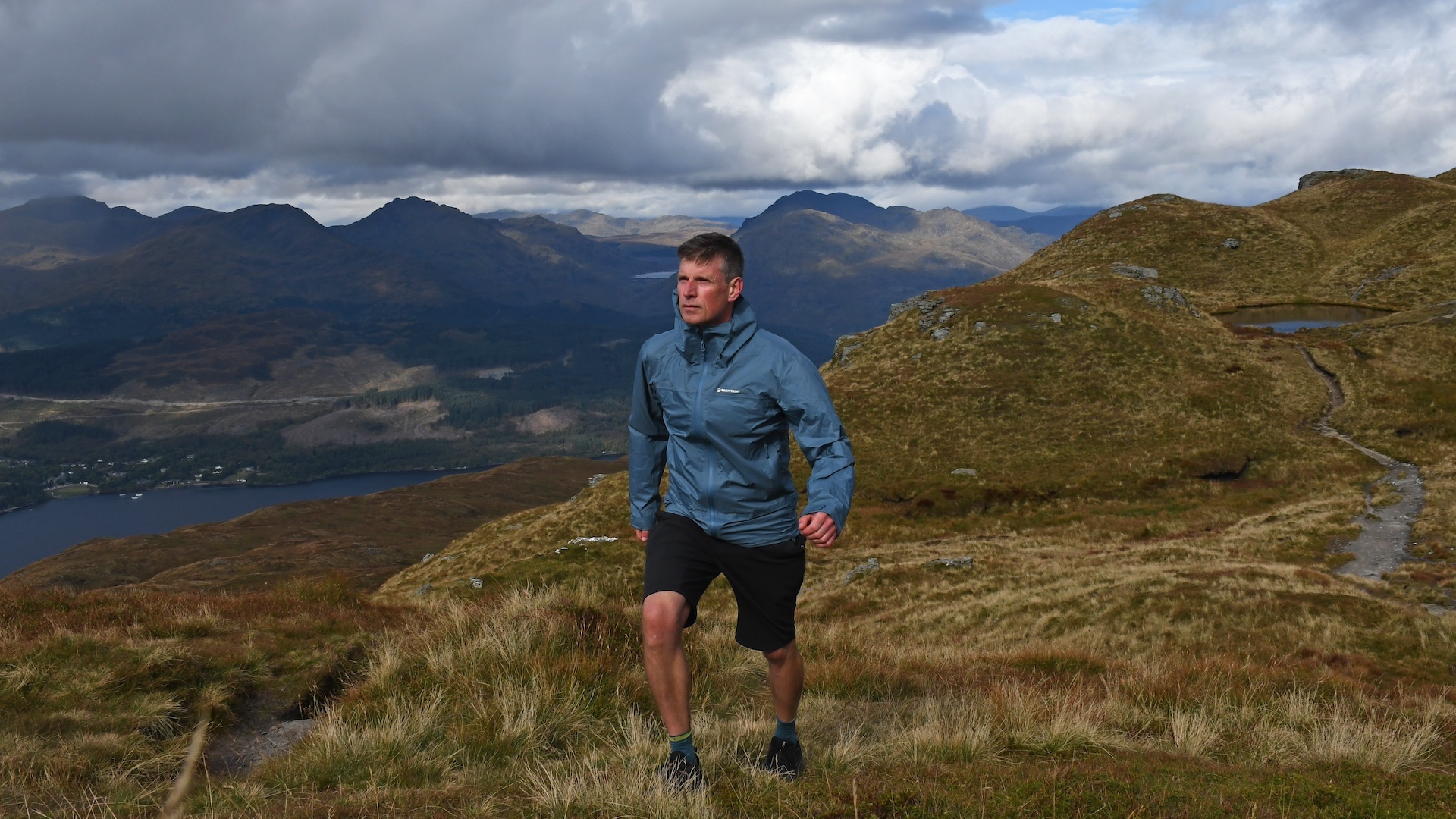
Meet the reviewer
Montane Cetus Lite: first impressions
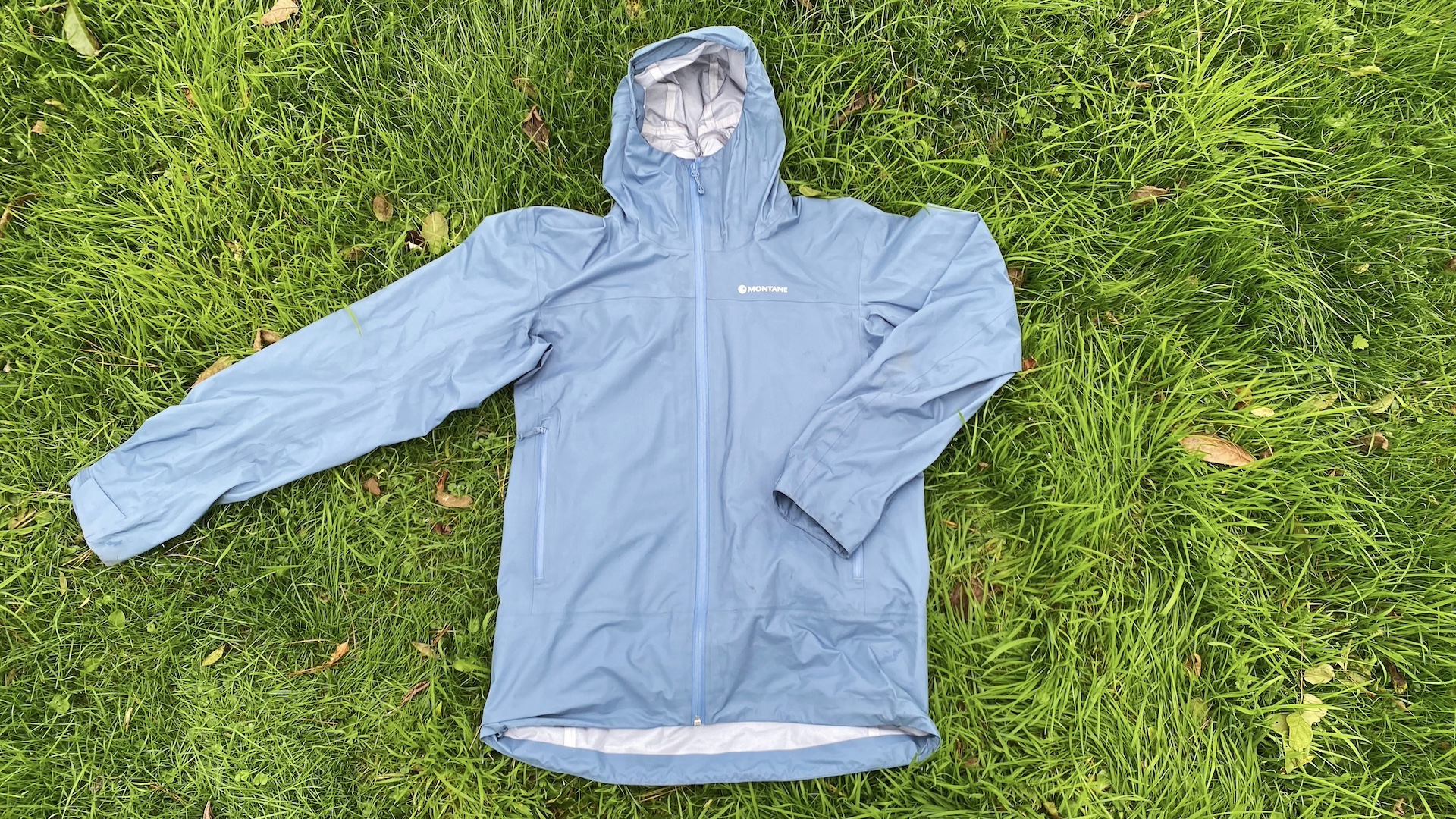
Montane have been releasing rapidly evolving gear at pace recently, including this exciting-looking jacket, the Montane Cetus Lite, which is the very first garment to feature the British brand’s all-new three-layer Petrichor fabric, heralded as a breakthrough development in the world of wearable waterproof/breathable tech.
• List price: $340 (US) / £270 (UK) / €320 (EU)
• Sizes: M: S-XXL; W: XS-XXL
• Waterproof rating: HH 20,000mm
• Breathability rating: RET <5
• Materials: 100% recycled, 21D Ripstop nylon face fabric with Petrichor membrane
• Weight (Men’s L): 320g / 11.3oz
• Colors: Men's: Stone Blue / Caper / Acer Red / Eclipse Blue; Women's: Deep Forest / Cornflower / Eclipse Blue
• Compatibility: Fastpacking, speed hiking, multi-day trekking, cycling, backpacking, climbing, skiing, kayaking
Montane have been promising virtually unsurpassed levels of breathability off the back of this new membrane, combined with complete protection from the outside elements, so I was looking forward to seeing how it would perform in comparison to the best outer shells and waterproof jackets on the market. Could it live up the hype?
I was extra intrigued because, on paper, the Cetus Lite presents as a reasonably high-specced shell jacket, with some decent but not mind-blowing figures. In the hierarchal pantheon of Montane’s best waterproof shells, it seems to sit somewhere in the middle. There are certainly jackets in the range that have higher waterproofing ratings and which are deemed slightly more breathable, such as the Phase XPD, which has a Gore-Tex membrane. Lab testing only reveals so much, though – it’s possible the new fabric could prove more impressive in a real life situation, and there’s only one way to find out.
Montane Cetus Lite: design and materials
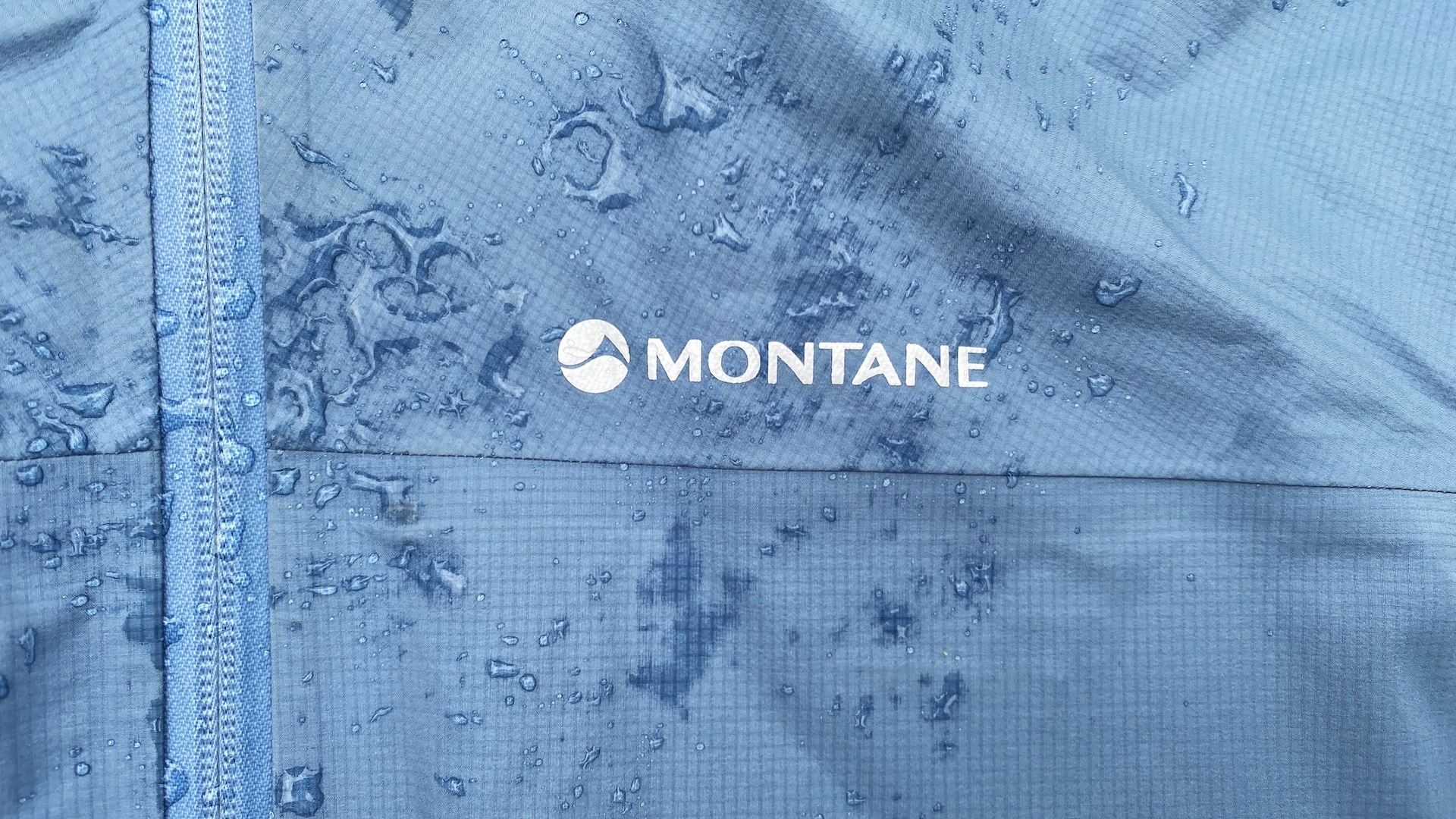
By far the most significant innovation on the Cetus jacket is the use of Montane’s new three-layer Petrichor fabric, a potentially game-changing technology revealed in August just gone, which is named after the lovely aroma you get when rain first falls on dry ground. The Petrichor system is based around a hydrophilic membrane that transfers moisture away from the wearer’s body during intense activity, pushing it to the outside of the garment where it evaporates. In theory, the more you build up a sweat, the harder the jacket will work to stop you getting damp from the inside.
This membrane is sandwiched between a durable Tricot lining and a 21D Ripstop face fabric (made with 100% recycled Nylon – an excellent development), treated with a non-fluorocarbon DWR. Montane claim the material is 100% waterproof (although, as noted above, there are garments in the brand’s own range that have a higher hydrostatic head rating than the Cetus) and say there has been ‘no intentional use of PFAS’, which is rather interesting phrasing.
The Cetus boasts all the standard features found on good-quality waterproof jackets (except pit zips, I regret to note), including an excellent hood with a stiffened storm peak and a high zip to protect the lower face, plus adjustable cuffs and hem, and an extended back panel to keep your bum dry.
Montane’s designers have used offset seams on this jacket, cutting down on the numbers of joins required and therefore reducing both the weight of the garment (very slightly) and the amount of potential failure points, so it should last longer. Furthermore, the peak, hem and cuff tabs have all been laminated, making them more robust and durable.
Montane Cetus Lite: in the hills
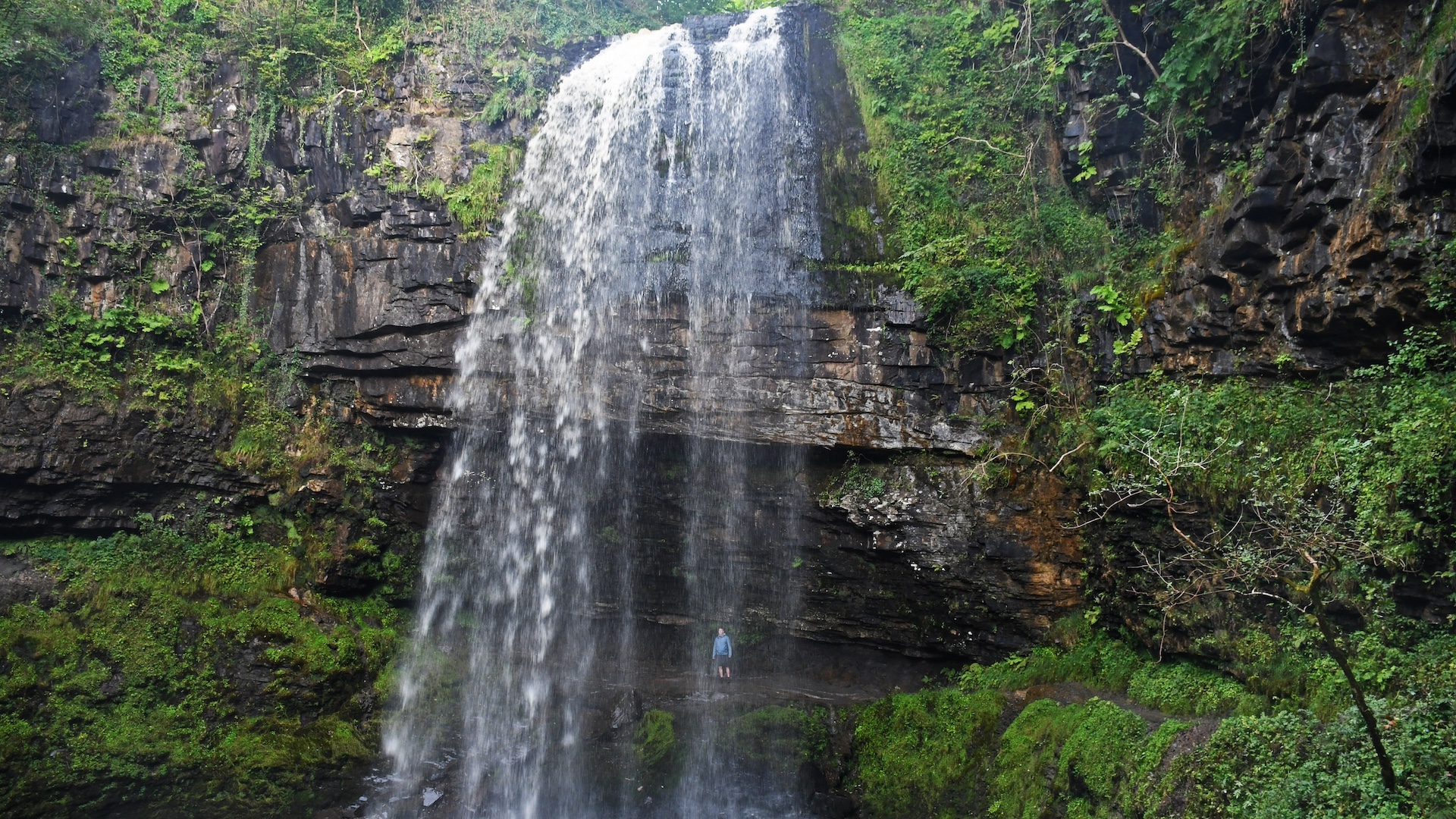
I’ve been trail testing the Montane Cetus Lite all around the UK over the last couple of months, wearing it in some of the country’s soggiest corners and while climbing a few of its tallest peaks.
In terms of features, fit and cut, I’ve been impressed with the Cetus Lite. I hover on the border between medium and large, but usually lean towards the bigger size for shell layers, so I can get a good fleece or puffer jacket beneath them if I need some serious mid layer thermal padding. However, I’ve been testing a medium-sized Cetus, and I was still able to comfortably wear it over the top of a Kathmandu Heli R down jacket when temperatures dropped near the top of Ben Lomond.
Unlike some cacophonously crinkly shell layers, this is a nice quiet coat to wear. The hood is good, and it’s easy to get a nice secure fit around hiking gloves and rain pants when it’s cold and raining, thanks to the adjustable cuffs and hemline. There are just two pockets on the Montane Cetus Lite, but they extend upwards and are very capacious, easily big enough to hold a hiking water bottle or sheet map. The zips are good quality too, both on the pockets and the main coat. I also really like the offset seams, and if they contribute to the jacket lasting longer, then that’s a massive bonus.
I do have one complaint. I’m a big fan of underarm pit-zips as a way of dumping excess heat quickly and effectively, but Montane never seem to feature these on their shell jackets. I assume this is to keep weight and complexity down, and because the designers think the garments are breathable enough without such venting, but I still maintain that pit vents are far more reliable and effective for managing moisture and staying comfortable than any membrane can ever be.
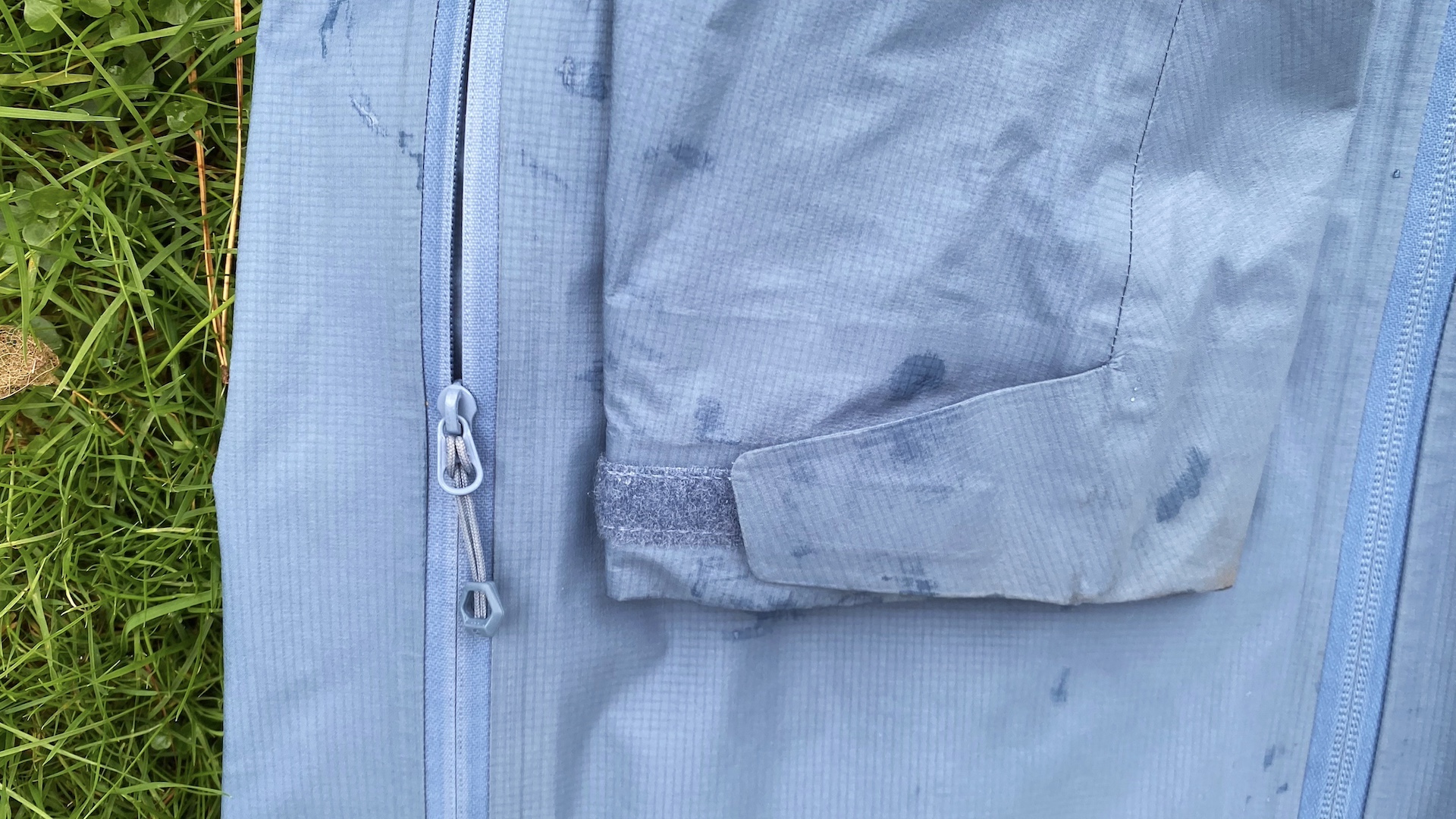
Which brings me to the Petrichor fabric. It’s extremely difficult (impossible) to apply even vaguely scientific assessments to how a material performs in terms of breathability when you’re out on the hill. You can tell if rain is getting in – and I’m happy to say that the Cetus Lite protected me from the outside elements excellently, with the DWR and waterproofing doing their job perfectly – but it’s harder to truly know whether internally generated vapor is escaping through the membrane, and at what sort of rate.
I can say with confidence that I never felt like I was cooking when I was wearing the Cetus (as I have in numerous other jackets). Even when I was under a bit of time pressure in the Scottish mountains and started speed hiking to peaks in order to avoid getting caught out by nightfall, I remained comfortable and my base layers didn’t get damp (except across my back when I was wearing a pack with slightly disappointing back ventilation, but I don’t think I can blame the Cetus for that).
Overall, the Cetus Lite has provided superb protection from the rain and the wind (and a waterfall during one escapade in Wales), and it has kept me comfortable and dry on the inside too. Lack of pit zips aside, it has a comprehensive range of great features, and it has been made with longevity and the environment in mind, which is all great. And, lastly (but significantly), it’s fairly sensibly priced for a highly technical garment, making it more accessible to more people.







